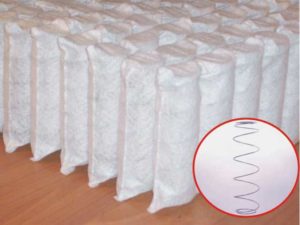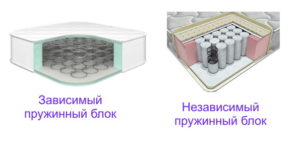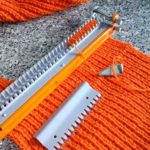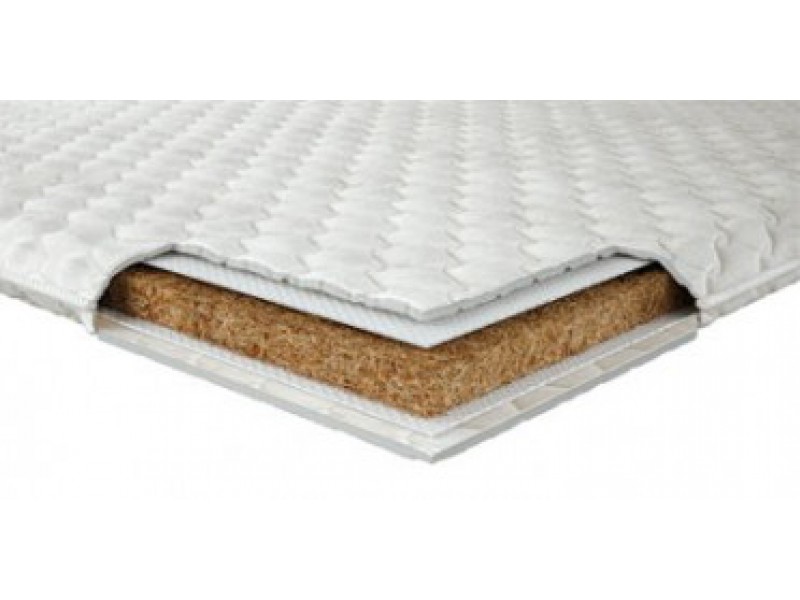What are independent springs in a mattress?
 Independent springs - these are springs that are not fastened together and are located in individual bags.
Independent springs - these are springs that are not fastened together and are located in individual bags.
An invention that has been providing convenience and comfort for more than a hundred years. Mattresses with a similar design are popular all over the world and are generally recommended as one of the most effective technologies for healthy sleep.
The use of 300 to 1 thousand springs per square meter in such mattresses provides them with high orthopedic qualities. As a rule, the service life of such mattresses is from 10 years.
Differences between independent springs and dependent ones
Unlike traditional mattresses, independent technology does not allow individual sections to “sink”, since each built-in spiral is not connected to the others, and even under pressure does not pull them along with it.
Unlike the old Bonnell system, in which all springs are connected directly, the connection between them is made using special covers. Due to this, an orthopedic effect is achieved - the surface of the mattress optimally adapts to the owner and evenly distributes the load on the spine.
Reference: Mattresses with the highest number of independent springs also use the best materials for production, such as coconut coir or latex. This affects the final cost, but is paid off by their quality, convenience and durability.
The content of the article
What are there
There are different types of blocks used in the manufacture of mattresses. The main differences are in the number of turns, diameter and density of sections per square meter. The higher these indicators, the stronger the anatomical effect.
Multi-package
 Contains up to 500 springs per square meter, 7-10 turns long. Provides high orthopedic properties and comfortable use. Ideal for people of average build.
Contains up to 500 springs per square meter, 7-10 turns long. Provides high orthopedic properties and comfortable use. Ideal for people of average build.
EVS
One of the most popular blocks, distinguished by its budget, but at the same time slightly inferior to analogues in orthopedic terms. There are various modifications that differ in the density of the mattress. For their manufacture, blocks are used 256, 310 and 510 per square meter.
Spring in a spring
Optimal for large people, also ideal for couples with a significant difference in weight. The orthopedic effect is achieved through the use of smaller auxiliary spirals in the blocks, alternating with the main ones in a checkerboard pattern and distributing the load depending on the severity.
Smart Spring
One of the latest manufacturing technologies that allows you to create point sectors of rigidity in each individual block. Contains up to 256 springs per sq. m., for the manufacture of which wire of various lengths is used. Due to this, the effect of relieving muscle fatigue and stress on the spine is achieved.
"Hourglass"

A distinctive feature of such blocks is increased stability and strictly vertical compression of the springs, which occurs in three stages. The presence of several degrees of hardness provides additional comfort when using mattresses of this system.
Multizone blocks
Such mattresses use additional reinforcement in the form 5-7 cross blockslocated in areas with maximum load. The use of high-stiffness springs avoids compression and significantly improves spinal support.
When were they invented
The first mattresses with blocks of independent springs were produced in 1900, but had a high cost associated with manual manufacturing technology. Because of this, they were not in widespread demand among the population. Only 25 years later, the British company Simmons registered a patent for machine production, which made it possible to reduce the retail price and make the products affordable.
How are they produced?
When producing such independent type blocks, each spring is placed in a separate closed case. Then the cells are fastened together. This technology is silent and lacks the “wave” effect characteristic of classic mattresses.






